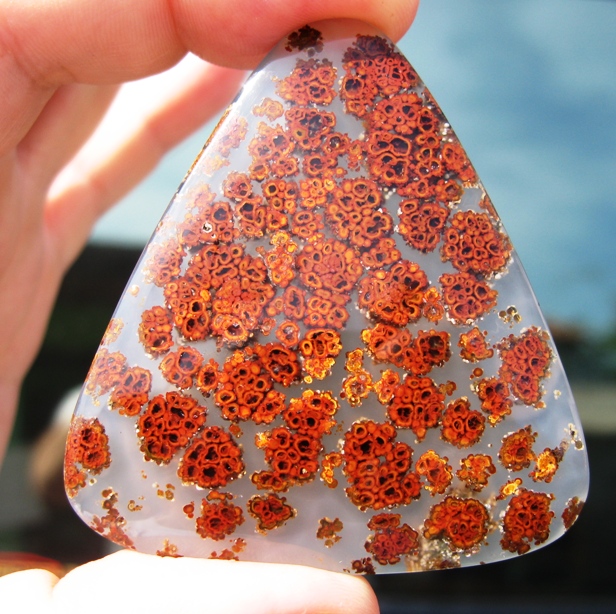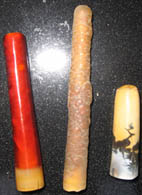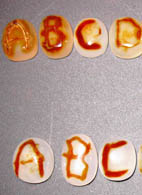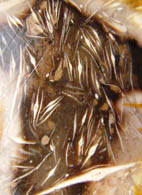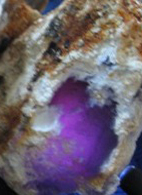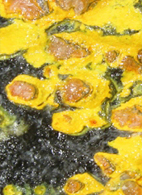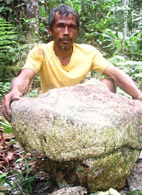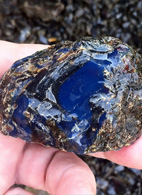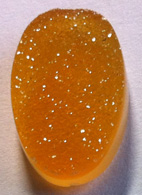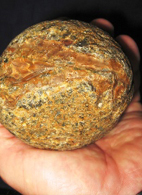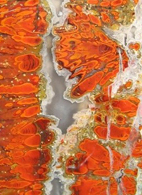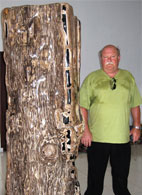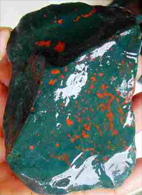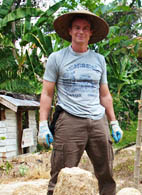From the rugged mountains of East Java, comes yet another beautiful rock formed by a combination of tectonic and volcanic activity (Photo #1).

The East Java Plume Agate is hosted in orange red jasper which has been splintered by faulting and flooded with blue-ish white chalcedonic quartz veins. The flame and plume shapes occur along the fringes of the veins and occasionally as wedges and pods within the veins. In the soil they find silicified nodules of greenish to golden yellow, orange and red plumes and flame shapes. The minerals forming the plumes are mainly yellow goethite and red hematite. They occur along with white crusts of hydrated silica and black to brown pockets and outlines of iron or manganese hydroxide minerals (Photo #2).

At depth, there are thin blue fracture coatings of silicated chrysocolla. We have not yet seen chrysocolla incorporated into the plume/flame matrix but this indicates there more than just iron and manganese metals in the mix.
This deposit was found in late 2009. It is situated within an area of restricted entry for commercial mining we expect only limited quantities of plume agate to surface. The digs are located 3 hours hike up rugged slopes thru small stands of the famous East Java teak. Local farmers first collected pebbles and cobbles from the thin soil while digging in their sweet potato fields. Now they work the vein sets upslope with hammer and chisel in their free time. The production area is only 40m in length and the costeans they have dug are now up to several meters deep (Photos #3 & #4).


Bag by bag it works its way to our warehouse West Java (Photo #5 and #6).

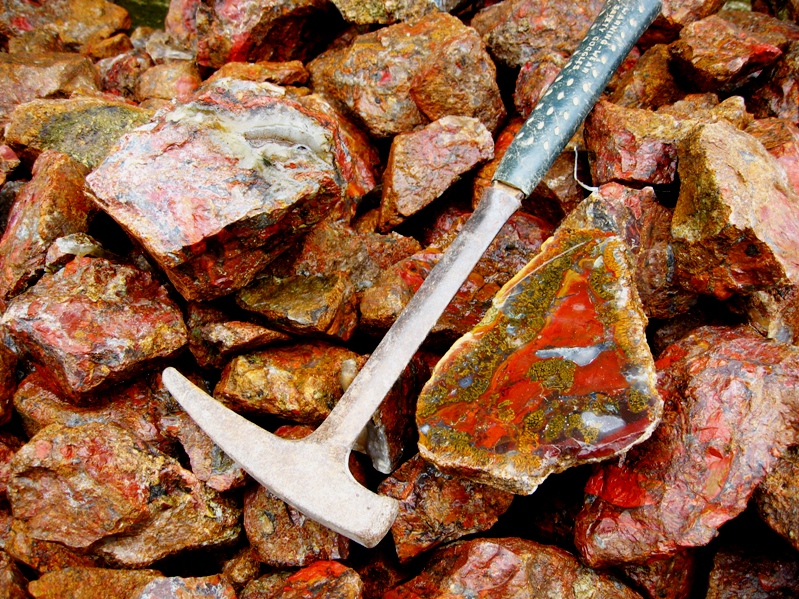
In working this material, it is important to note the flame or plume growths are directional. They are typically elongate perpendicular to the walls of the cavities or cracks in which the veins formed. Cut in one direction you may get 10mm long flames yet when cut perpendicular you may only see pods, orbs or caterpillar shapes (Photos #7 & #8).


The material cuts beautiful polished slab specimens and the tight pattern also works well for designer cabs and custom bead shapes. The bead shape in Photo #9 cut was by Gary Andruss.
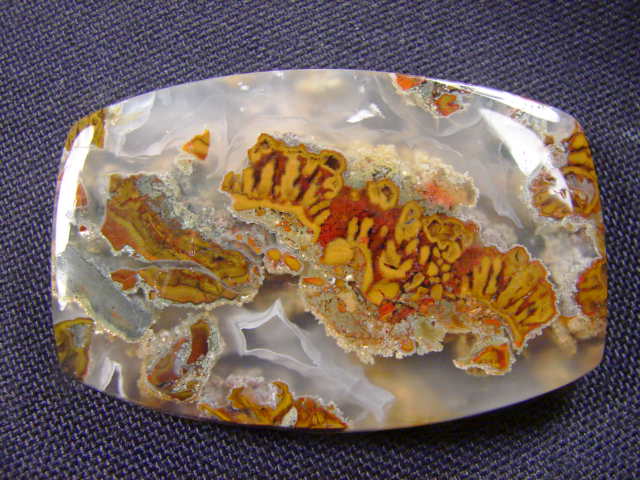
These 2 cabs (Photo #10 & #11) below are the pride of our village workshop! Photo #10 illustrates the result of slabbing parallel to the veins and the cab in Photo #11 shows the cross section from a perpendicular cut.
